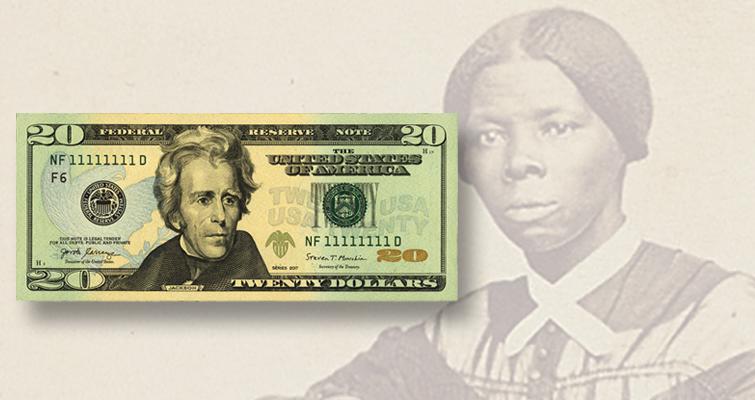BEP under scrutiny for Tubman design delays Community Comments
The June 3 issue of the Washington Post took a fresh look at the snail’s pace progression of getting Harriet Tubman on the $20 Federal Reserve note. Annie Linskey wrote of what could be bureaucratic inertia playing a role in the delay.
This is despite the fact, as the story relates, that the Biden administration said it would look for ways to quicken the development of a Tubman note. There is little indication that any steps were taken to alter the schedule that the story says was established years ago “by a small agency within the Treasury Department.”
Sen. Jeanne Shaheen, D-N.H., long a proponent of the Tubman note, told the Post, “If we can put a helicopter on Mars, we ought to be able to design a $20 bill in less than 20 years ... It’s all about commitment.” The senator reportedly spoke to aides to President Biden after the election and believes that while they are in favor of the change, they are unsure how to speed up the process.
Activists who complain that United States money does not portray the country as it is today attribute the delay to the resistance of the machinery of government. For example, they say the Bureau of Engraving and Printing shows little interest in implementing any changes. The founder of Women on 20s, Barbara Ortiz Howard, told the Post reporter, “They don’t want to make the change, which I think is the only explanation for all of this nonsense.”
Not surprisingly, BEP Director Len Olijar disagrees. “We are committed to the goal of redesigning U.S. currency to better reflect the history and diversity of our country, but the security of our currency remains paramount.”
This is not a new excuse, but one the BEP has been giving for years. Anti-counterfeiting measures placed on a note are said to require years of development and testing by diverse interested parties.

Another impediment is said to be a federal court order in 2008 that requires tactile elements be placed on future notes to help the blind and visually impaired identify them. Objections to this are coming from banks who are concerned about how much it would cost them to convert ATMs, and also that the raised features would make stacking notes more difficult.
As anyone who has withdrawn currency in any number of foreign countries can attest, this objection is nonsense.
Another problem with the Tubman note is that the Advanced Counterfeit Deterrence Committee, the anti-counterfeiting advisory group, recommended to the Treasury that the $10 and $50 notes be revised before the $20 denomination.
Two unnamed Treasury officials who spoke to the Post would not say if Secretary Janet Yellen would change the order so the $20 note could be issued before the $10 denomination, or if Tubman might be moved to the $10 note instead, to the chagrin of fans of the Hamilton Broadway musical.
Former Treasury Secretary Jack Lew, who initiated the design change in 2016, said that when he tried to speed up the pace of design work, the bureaucracy countered that he was pushing too hard. Lew acknowledged that the process was “mind-numbingly slow,” but the security issues were real and could not be rushed.
Eric Bridges, executive director of the American Council of the Blind, perhaps summed up the situation best, saying, “Unless President Biden or someone at the White House gets actively involved with this issue, in negotiating a resolution or holding folks accountable, it’s not going to end.”
Connect with Coin World: Sign up for our free eNewsletterAccess our Dealer Directory Like us on Facebook Follow us on Twitter

